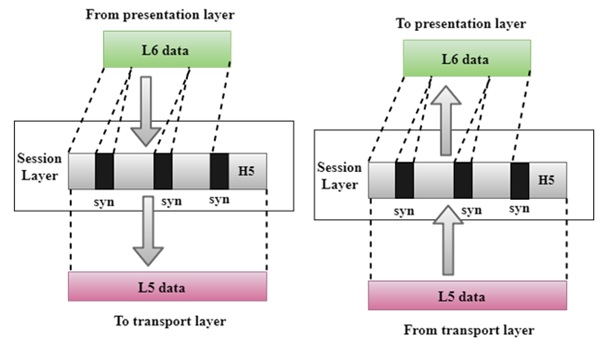Home »
Computer Network
Session Layer: What It Is, Design Issues, Functionalities
Description and Functions of Session Layer in the OSI model: In this article, we are going to learn what the Session layer is and the Functions of Session Layer in the OSI model in Computer Networking. We will also discuss the Design issues with Session Layer and the working of Session Layer with the help of its diagram and an example.
By Monika Jha Last updated : May 05, 2023
What is Session Layer?
The services provided by the first three layers are not enough for some processes. The session layer is also known as a network dialog controller, it creates, maintains, synchronizes the interaction between communicating applications.
- The session layer tracks the dialogs between systems, which are also called sessions. This layer manages a session by initiating the opening and closing of sessions between end-user application processes.
- It also controls single or multiple connections for each end-user application and directly communicates with both the presentation and the transport layers. The services provided by the session layer are generally implemented in the application environment using remote procedure calls (RPCs).
- In the Session layer, streams of data are marked and are resynchronized properly, so that the ends of the messages are not cut prematurely and data loss is avoided.
- A protocol such as Zone Information Protocol, AppleTalk Protocol, and Session Control Protocol are used to implement sessions on Web browsers.
- Through checkpointing and recovery session management and restoration are possible using these protocols.
- For example, in live television programs sessions are implemented, in which the audio and video streams emerging from two different sources are merged. This can be avoid overlapping and silent broadcast time.
This figure shows the relationship of the Session layer to the transport layer and presentation layer,

Session Layer
Design Issues with Session Layer
- Management of dialog control.
- It allows machines to make sessions between them seamlessly.
- Token management and Synchronization, such services also provided by the session layer.
- Provide quality and intensified services to the user.
Functionalities of the Session Layer
Specific functionalities of the Session Layer are as follows:
1. Dialog Control
- The session layer behaves as a dialog controller.
- It allows two communication machines to enter into a dialog.
- It permits to communicate in either half-duplex (one way at a time) or full-duplex (two ways at a time) mode of communication.
- For Example, A dialog between a terminal connected to the mainframe can be half-duplex.
2. Synchronization
- This layer permitted a process to add checkpoints which are referred to as synchronization points into the stream of data.
- Example: If a system is sending a file of 2500 pages, It is advisable to add checkpoints after every 100 to ensures that a 100-page unit is successfully received and acknowledged independently.
- In this case, if a crash happens during transmission of page number 824; then retransmission begins on page 801. There is no need to retransmit pages 1 to 800 pages.
3. Token Management
This layer is also responsible for managing tokens. Through this, it prevents the two users to simultaneously attempt access of the same critical operation.
Advertisement
Advertisement